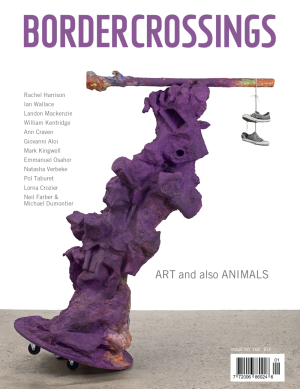Hives of Productivity: Aganetha Dyck
Winnipeg artist Aganetha Dyck is concentrating on the workforce. “I’m making a series of all the different professions within the hive,” she says, “worker and drone and nurse and, of course, the queen.” She thinks of the finished pieces as if they were signs above the desk announcing the function of the insect and the importance of its job. In Dyck’s measure of the hierarchy of things, the artist is the least important. “I’m way below the queen” is her modest assessment of the role she plays in the world according to the bees.
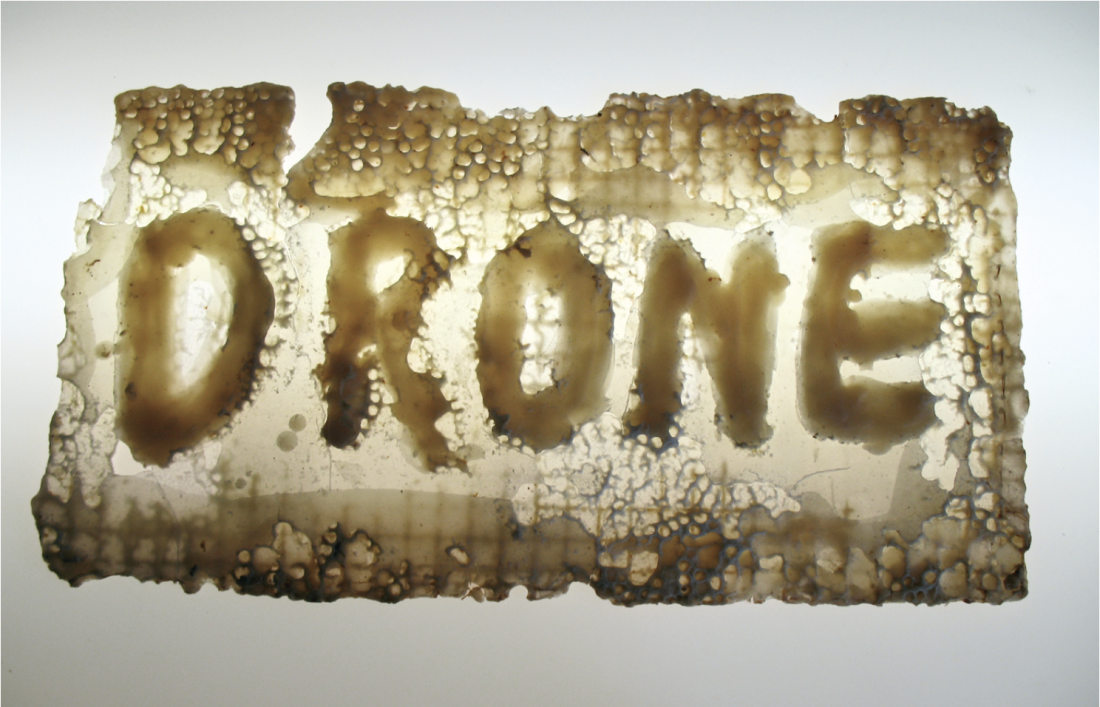
Aganetha Dyck, Drone, 2006, beeswax and honeycomb text, 14 x 48 cm.
It became apparent this year that her peers and professional funding bodies didn’t agree. Aganetha Dyck won both a Governor General’s Award for the Visual and Media Arts and the Lifetime Achievement Award from the Manitoba Arts Council. “I’m thrilled and I’m honoured. It has validated my career and it has made me just want to work more. I have a lot of energy and it just made me freer. I feel like playing again.”
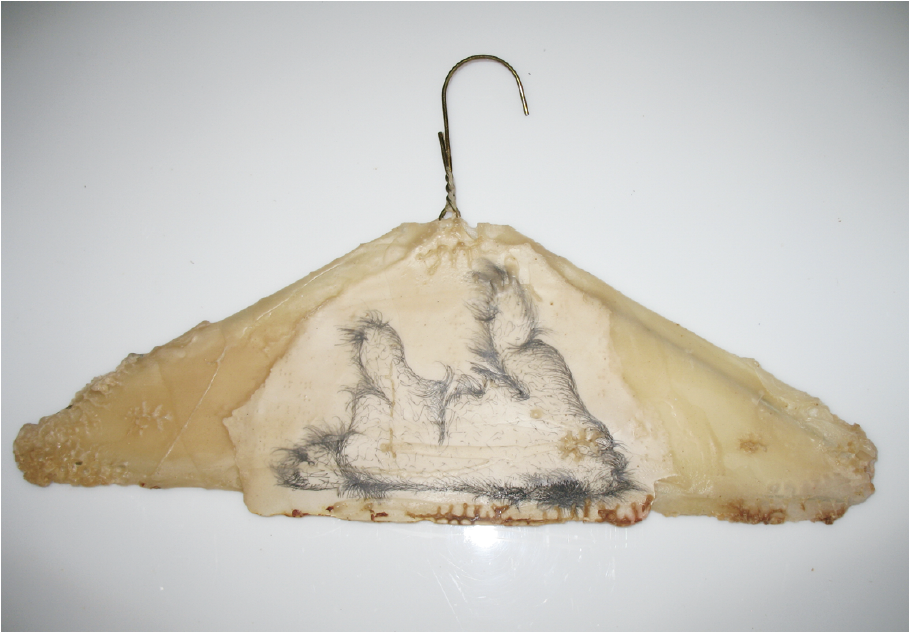
Aganetha Dyck, Bee Remnant, 2005, 2006 beekeeping season, wire dry cleaner hanger, paper, pen and ink, beeswax, 45 x 26 cm.
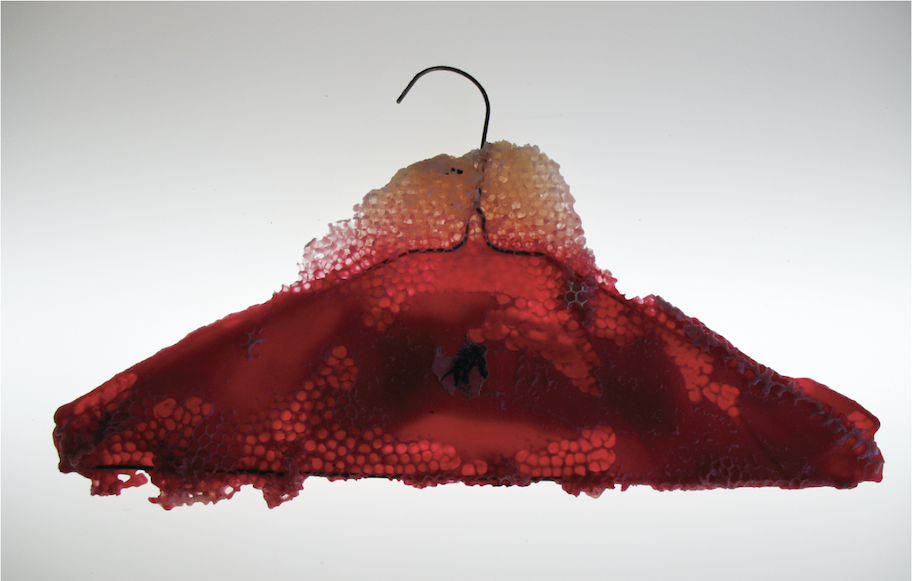
Aganetha Dyck, Red Hanger, 2005, 2006 beekeeping season, wire dry cleaner hanger, coloured honeycomb with pen and ink drawing, 44 x 22 cm.
The form her play has taken involves the purchase of two pony saddles, which she intends to cover with wax and then place in the crook of a tree 20 feet in the air as a sipping sight for wayward creatures. Dyck’s practice has been concerned all along with the denial of anthropomorphism. She cites a study that claims bees can recognize certain faces; she watched them work with specific pieces of her grandmother’s tablecloth. “I found out that as long as the pattern is close to their own, they’ll go for it. It saves them a lot of work.” There is something deeply personal about her recent bee work. She has made over 360 clothes hangers, which are a tribute to her grandmother, who had been a wealthy woman when she and her family were deported from Russia. “When they had to flee, they dressed themselves in all the clothes they could wear. They dressed in five dresses and two coats and underwear, and when she told me that story, I said to her, ‘But Grandma, you were a walking closet.’ In honour of her, that’s what I called the body of work.”

Aganetha Dyck, Mite Intruder, 2005, 2006 beekeeping season, pen and ink drawing on Braille text, honeycomb wax structure by the bees, 41 x 41 x 8 cm.
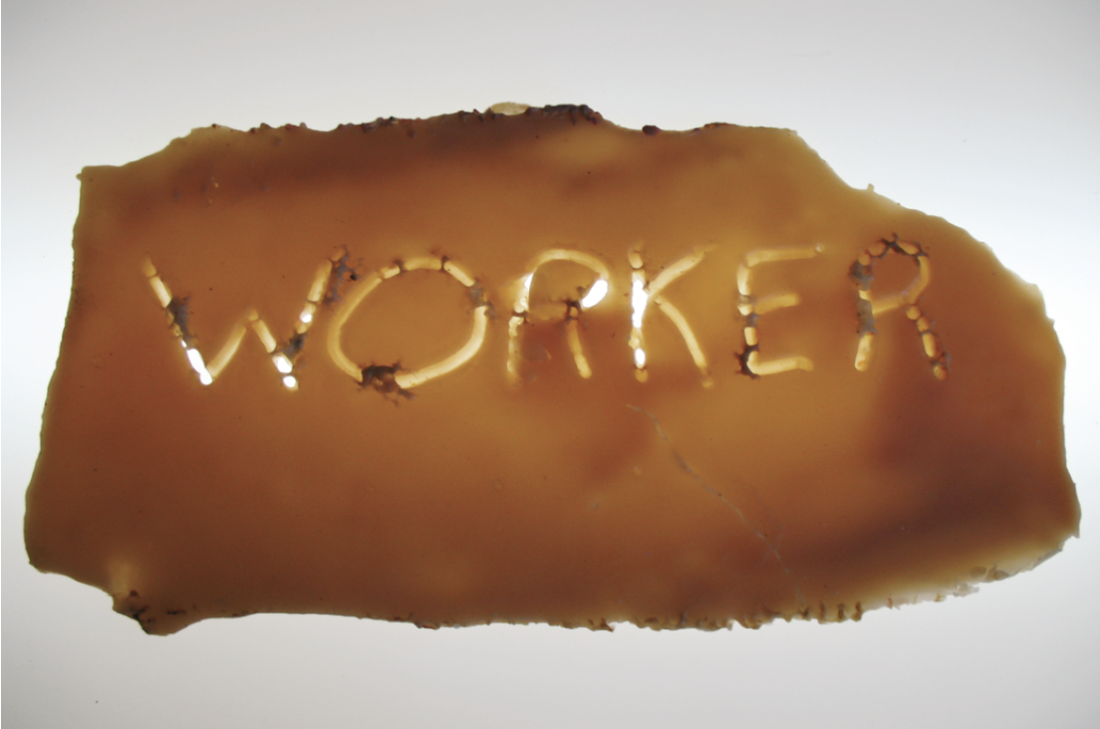
Aganetha Dyck, Worker, 2006, wax sheet, carved text altered by the bees, 38 x 51 cm.
Dyck is constantly finding new ways to work with the bees. She adds food colouring to the beeswax to make it seem painterly. She has worked with scents, even simple marks. “I’m just experimenting because I want to see how close I can get to them. I don’t very often put objects into the hive anymore; I’ve been trying so hard to paint and draw with the bees.” Her energy level is unprecedented and she never seems to be without ideas. “I’ve lived a long life,” she says, “and there are a lot of ideas floating around everywhere.” ■

